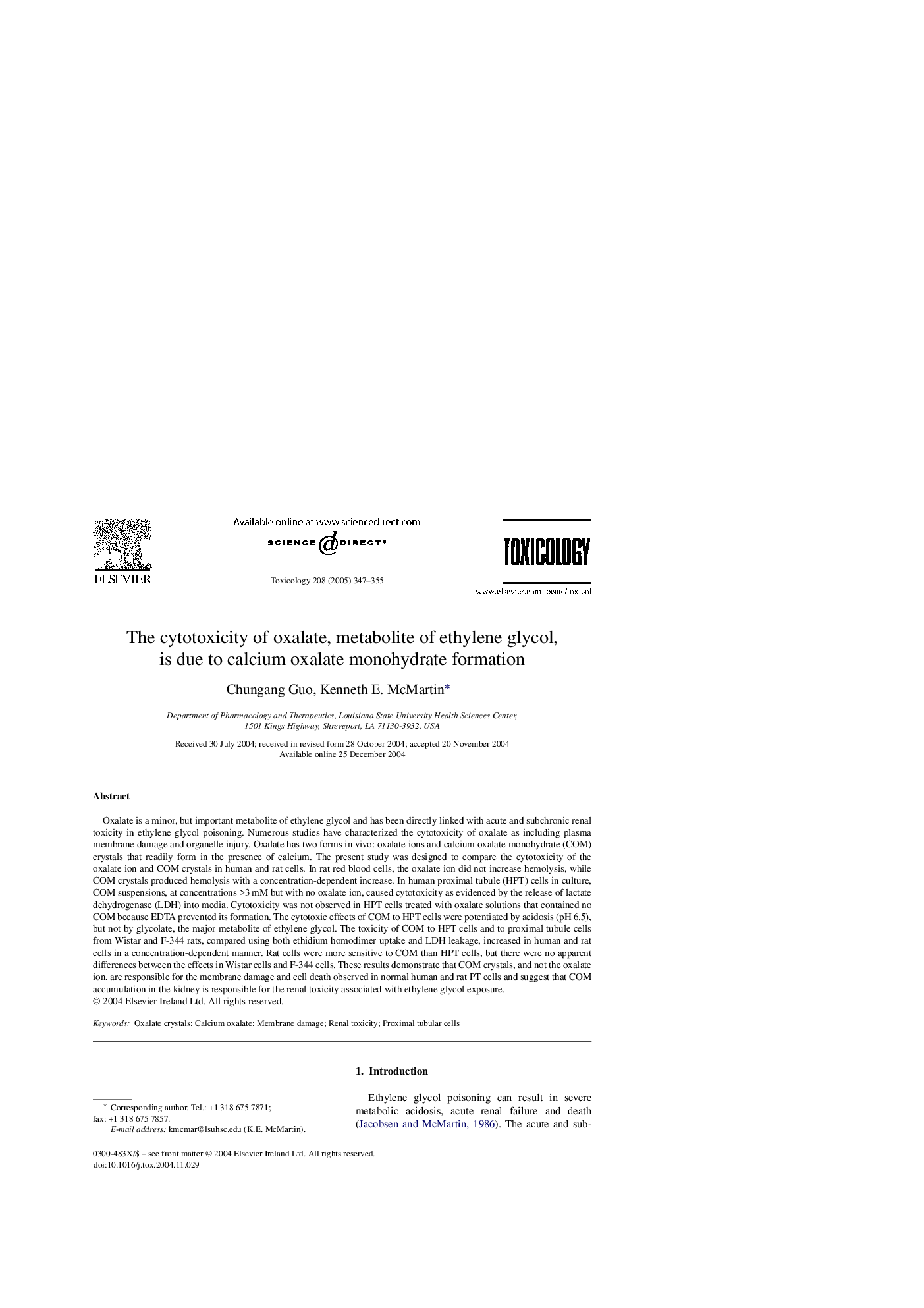| Article ID | Journal | Published Year | Pages | File Type |
|---|---|---|---|---|
| 9034655 | Toxicology | 2005 | 9 Pages |
Abstract
Oxalate is a minor, but important metabolite of ethylene glycol and has been directly linked with acute and subchronic renal toxicity in ethylene glycol poisoning. Numerous studies have characterized the cytotoxicity of oxalate as including plasma membrane damage and organelle injury. Oxalate has two forms in vivo: oxalate ions and calcium oxalate monohydrate (COM) crystals that readily form in the presence of calcium. The present study was designed to compare the cytotoxicity of the oxalate ion and COM crystals in human and rat cells. In rat red blood cells, the oxalate ion did not increase hemolysis, while COM crystals produced hemolysis with a concentration-dependent increase. In human proximal tubule (HPT) cells in culture, COM suspensions, at concentrations >3Â mM but with no oxalate ion, caused cytotoxicity as evidenced by the release of lactate dehydrogenase (LDH) into media. Cytotoxicity was not observed in HPT cells treated with oxalate solutions that contained no COM because EDTA prevented its formation. The cytotoxic effects of COM to HPT cells were potentiated by acidosis (pH 6.5), but not by glycolate, the major metabolite of ethylene glycol. The toxicity of COM to HPT cells and to proximal tubule cells from Wistar and F-344 rats, compared using both ethidium homodimer uptake and LDH leakage, increased in human and rat cells in a concentration-dependent manner. Rat cells were more sensitive to COM than HPT cells, but there were no apparent differences between the effects in Wistar cells and F-344 cells. These results demonstrate that COM crystals, and not the oxalate ion, are responsible for the membrane damage and cell death observed in normal human and rat PT cells and suggest that COM accumulation in the kidney is responsible for the renal toxicity associated with ethylene glycol exposure.
Related Topics
Life Sciences
Environmental Science
Health, Toxicology and Mutagenesis
Authors
Chungang Guo, Kenneth E. McMartin,
